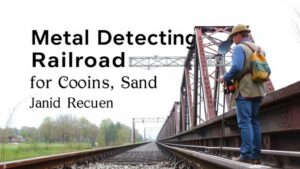Unearthing Hidden Currency Near Abandoned Trading Post Warehouses
Unearthing Hidden Currency Near Abandoned Trading Post Warehouses
Throughout history, abandoned trading posts and warehouses have fascinated both archaeologists and treasure hunters. These sites, once bustling hubs of commerce, often hold remnants of past economic activities, including hidden currencies and forgotten artifacts. This article aims to explore the process of locating and unearthing these hidden treasures, examining their historical significance and implications for modern economic studies.
The Historical Context of Trading Posts
Trading posts emerged primarily in the late 15th century to facilitate trade between European settlers and indigenous populations. In North America, notable trading centers such as the Hudsons Bay Company posts played pivotal roles in fur trading. Abandonment of these posts usually occurred due to economic shifts, changes in trade routes, or environmental factors.
- The decline of the fur trade diminished the necessity for numerous trading posts.
- Environmental changes, such as the depletion of resources, often made locations unsustainable.
These abandoned locations are not just historical markers; they often conceal valuable artifacts that can provide insights into previous economic systems.
Types of Hidden Currency and Artifacts
Within abandoned trading posts, various forms of currency may be uncovered. The term currency encompasses not only coins but also trade goods and alternative forms of monetary exchange used at the time.
- Currency coins, such as colonial-era coins that reflect the economic influences of the period.
- Trade goods like beads, furs, or tobacco, which served as a barter system in many indigenous cultures.
For example, a recent excavation at a former trading post in Michigan revealed a cache of 18th-century British coins alongside indigenous trade goods, signifying a complex interplay of cultural and economic interactions.
Methods for Locating Hidden Treasures
Locating hidden currency and artifacts requires a blend of historical research and modern technology. Several effective methods include:
- Historical Research: Understanding the trading dynamics of the time can guide archaeologists in choosing their excavation sites.
- Geophysical Surveying: Techniques such as ground-penetrating radar (GPR) and magnetometry can identify anomalies in the earth, which may indicate buried objects.
- Metal Detection: This method allows treasure hunters to scan for metal artifacts that signify past activity.
For example, the use of GPR at an abandoned trading post in the Canadian Arctic successfully revealed buried storage pits where currency and trade items were likely concealed.
Case Studies of Successful Discoveries
Numerous successful excavations have led to significant discoveries of hidden currency. One notable case occurred at Fort Michilimackinac in Michigan. Archaeological investigations unearthed a trove of 17th-century coins and trade items, providing a wealth of information about the economic exchanges between French traders and indigenous populations.
Another compelling case is the discovery of over 2,000 silver coins at an abandoned trading post in the Dakotas. This find was particularly valuable because it offered insights into trade relations and the flow of money in pre-Columbian America, shading light on economic disparities that existed at the time.
The Economic Implications of Discovery
Uncovering hidden currency at abandoned trading posts has substantial implications for understanding historical economies. These discoveries enhance our knowledge of:
- Trade networks and their dynamics during different historical periods.
- Colonial impacts on indigenous economies and cultural exchanges.
- Shifts in currency systems and their effects on socio-economic structures over time.
For example, the currencies found can be analyzed to determine economic trends, leading researchers to better understand how resource availability and trade practices evolved. Also, items exchanged can shed light on cultural interactions and societal hierarchies.
Conclusion and Actionable Takeaways
Unearthing hidden currency near abandoned trading post warehouses not only unveils buried treasures but also provides essential insights into historical economic practices. This field combines archaeology, history, and modern technology, offering exciting opportunities for those interested in economics, anthropology, and history.
For individuals or organizations looking to engage in this type of research, the following actions are recommended:
- Conduct thorough historical research before selecting a site for excavation.
- Use modern geophysical technology to enhance the chances of successful finds.
- Collaborate with local historians and archaeologists to maximize the interpretive potential of recovered artifacts.
By integrating historical context, modern techniques, and collaborative efforts, the quest for hidden currency and artifacts at abandoned trading posts can yield meaningful contributions to our understanding of economic history.



